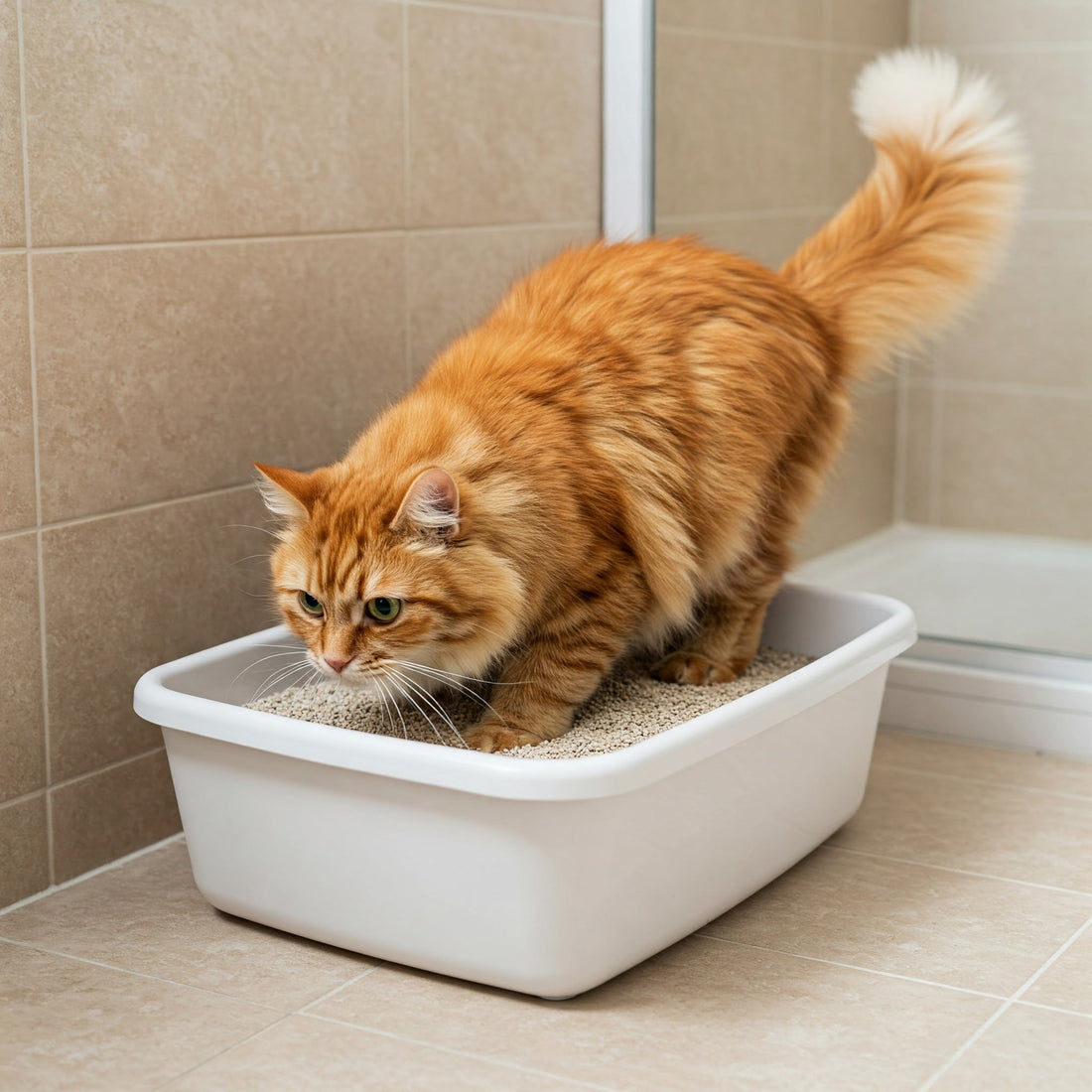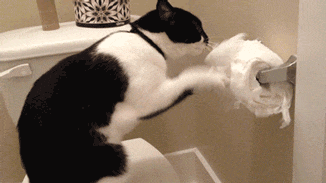
Cat Litter for Sensitive Cats: Finding the Gentle Option
Share
For cats with sensitivities, the wrong litter can become a source of significant discomfort, leading to avoidance of the litter box, inappropriate elimination, or even health complications. Felines with delicate paws, respiratory issues, allergies, or skin conditions require special consideration when selecting litter—what works for most cats may prove irritating or even harmful for these vulnerable pets. The quest for the perfect gentle litter involves understanding the various types available, recognizing how different formulations affect sensitive cats, and knowing what signs indicate a product isn’t agreeing with your pet.

Is Your Cat’s Litter Making Them Sick? How to Choose the Safest Option for Sensitive Cats
Clay litters, while popular for their absorbency and odor control, often pose problems for sensitive cats. The fine dust common in many clay varieties can trigger respiratory distress in cats prone to asthma or allergies, causing coughing, sneezing, or labored breathing. For cats with tender paw pads, the rough texture of some clay granules may feel abrasive, making digging and covering waste an unpleasant experience. Additionally, the heavy perfumes added to many scented clay litters can overwhelm a cat’s sensitive olfactory system—a cat’s sense of smell is fourteen times stronger than a human’s, making artificial fragrances particularly offensive. Some clay litters also contain sodium bentonite, a clumping agent that expands when wet and may cause intestinal blockages if ingested during grooming, presenting particular risks for kittens or cats prone to excessive licking.
Natural plant-based litters frequently emerge as superior alternatives for sensitive felines. Options like those made from pine, wheat, corn, or paper typically produce minimal dust, reducing respiratory irritation. These materials often have softer textures that feel gentler underfoot, encouraging consistent litter box use. Pine litter, for example, naturally contains compounds that help neutralize odors without relying on artificial perfumes, while wheat-based litters often clump effectively without synthetic additives. However, even natural litters require careful selection—some cats may develop sensitivities to specific plant proteins, and certain varieties may still produce more dust or tracking than others. The biodegradability of plant-based litters adds another benefit for environmentally conscious owners, though the higher price point of some premium natural options may require budget consideration.
Silica gel crystal litters present another option worth examining for sensitive cats. Composed of porous silica beads, these litters excel at moisture absorption and odor control while generating virtually no dust—a boon for cats with respiratory sensitivities. The smooth, rounded crystals tend to feel comfortable underfoot, lacking the sharp edges that might bother delicate paws. However, some cats object to the unusual texture or sound of the crystals, leading to avoidance, and the extremely absorbent nature of silica means urine can become less visible, potentially masking early signs of health issues that attentive owners might otherwise notice through monitoring litter box output. The non-clumping variety requires more frequent full changes than clumping alternatives, though this also eliminates concerns about ingestion of clumping agents.
Recycled paper litters stand out as perhaps the gentlest option for cats with multiple sensitivities. The ultra-soft texture makes them ideal for post-surgical patients, elderly cats with arthritis, or those recovering from paw injuries. Being virtually dust-free, they’re excellent for respiratory-sensitive cats, and their high absorbency helps maintain dryness in the litter box. However, paper litters typically lack strong odor control compared to other types and don’t clump, requiring more frequent complete changes. Some paper products come scented, which may defeat the purpose for fragrance-sensitive cats, so unscented versions are generally preferable. The lightweight nature of paper litter can also lead to more tracking around the litter box area, though this may be a worthwhile trade-off for cats needing extreme gentleness.

The transition to a new litter must be handled carefully for sensitive cats, as abrupt changes can cause enough stress to trigger litter box avoidance. A gradual approach—mixing increasing amounts of the new litter with the old over seven to ten days—allows the cat to acclimate to the novel texture and scent without feeling overwhelmed. During this period, observing the cat’s behavior closely provides valuable feedback; hesitation before entering the box, excessive shaking of paws after exiting, or sneezing near the litter may indicate lingering discomfort with the new product. Maintaining multiple boxes with different litter types during transition can help identify preferences, though once settled, consistency becomes key to preventing stress-related elimination issues.
Beyond the litter itself, other factors in the litter box setup significantly impact sensitive cats. The box’s size and entry style matter—cats with mobility issues may struggle with high-sided boxes, while those sensitive to confinement may resist covered designs. Placement plays a crucial role too; locating boxes away from noisy appliances, in low-traffic areas, but still easily accessible helps sensitive cats feel secure. The number of boxes available should exceed the number of cats in the household, with a general rule of one box per cat plus one extra, to prevent stress-related accidents. For multi-cat homes, having different litter types available in various locations accommodates individual preferences and reduces competition.
Regular cleaning remains paramount when dealing with sensitive cats, as their tolerance for soiled boxes tends to be lower than average. Scooping at least once daily, if not more frequently, prevents odor buildup that might deter fastidious felines. However, the cleaning products used matter greatly—harsh chemicals or strongly scented cleaners can leave residues that irritate sensitive paws or noses. Warm water with mild, unscented soap often works best for routine cleaning, with vinegar solutions effective for periodic deeper cleans without risking chemical sensitivities. Completely changing the litter and washing the box regularly prevents lingering odors that might bother sensitive cats, though the frequency depends on the litter type and number of cats using it.
For cats that continue to show signs of discomfort despite litter changes, underlying health issues may be contributing to their sensitivity. Urinary tract infections, arthritis, or skin conditions can make litter box use painful, causing aversion behaviors that might be mistaken for litter dissatisfaction. A veterinary examination can rule out or address these medical factors, ensuring the cat’s comfort isn’t compromised by an untreated condition. In some cases, veterinarians may recommend specific litter types as part of managing particular health concerns, such as dust-free options for asthmatic cats or extra-soft varieties for those with pododermatitis.
The environmental impact of different litter types may also factor into an owner’s decision, especially for those particularly concerned with sustainability. Plant-based litters generally offer the most eco-friendly options, being biodegradable and often made from renewable or recycled materials. Clay litters, being strip-mined, carry heavier environmental consequences, while silica litters, though not biodegradable, may last longer between changes. Balancing ecological concerns with a sensitive cat’s needs sometimes requires compromise—a litter that’s slightly less sustainable but keeps the cat comfortably using the box may ultimately be preferable to one that’s perfectly green but causes avoidance behavior.

Cost considerations inevitably enter the equation when selecting litter for sensitive cats. While some specialty litters designed for sensitive felines carry premium price tags, their benefits in preventing medical issues or cleaning problems caused by inappropriate elimination may justify the expense. Buying in bulk can reduce costs for litters that work well, and some pet supply retailers offer subscription services that provide both convenience and savings. However, the cheapest option often proves false economy when dealing with sensitive cats, as the consequences of litter avoidance—vet visits for urinary issues, extensive cleaning of accidents, or damage to household items—can far outweigh the savings on budget litter.
The emotional aspect of finding the right litter for a sensitive cat shouldn’t be underestimated. Owners often feel frustrated and helpless when their cat rejects litter after litter, with each failed attempt adding to the stress for both pet and human. Patience and systematic experimentation typically yield the best results, sometimes requiring testing several options before discovering the perfect match. Celebrating small victories—a cat using the new litter without hesitation, or showing signs of increased comfort—helps maintain perspective during what can be a lengthy process. Many owners find that once they identify an ideal litter for their sensitive cat, the improvement in the cat’s well-being and the reduction in household stress make the effort profoundly worthwhile.
Ultimately, selecting litter for sensitive cats is less about finding a universally “best” product and more about identifying what works for the individual feline’s unique needs and preferences. What soothes one cat’s sensitivities might irritate another’s, making careful observation and willingness to adapt crucial components of the process. By prioritizing the cat’s comfort, monitoring for signs of distress or dissatisfaction, and being open to trying different solutions, owners can create a litter box experience that keeps their sensitive feline companion content, healthy, and consistently using the appropriate place for elimination. The reward comes in the form of a happy cat and a home free from the challenges of litter box avoidance—a win for both pet and owner alike.
